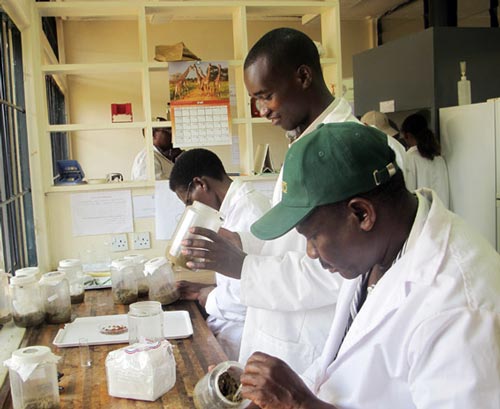 Insect Resistant Maize for Africa (IRMA) and its sister project, Water Efficient Maize for Africa (WEMA), have embarked on an initiative to train personnel in mass rearing of insects and develop rearing facilities. These insects are used in evaluation of maize resistance to insect damage. Through the initiative, 12 technicians from Kenya, Uganda, Tanzania, and Mozambique participated in a Stem Borer Mass Rearing Training Course held at the Kenya Agricultural Research Institute (KARI)-Katumani, Machakos, Kenya during 25 March-05 April 2012.
Insect Resistant Maize for Africa (IRMA) and its sister project, Water Efficient Maize for Africa (WEMA), have embarked on an initiative to train personnel in mass rearing of insects and develop rearing facilities. These insects are used in evaluation of maize resistance to insect damage. Through the initiative, 12 technicians from Kenya, Uganda, Tanzania, and Mozambique participated in a Stem Borer Mass Rearing Training Course held at the Kenya Agricultural Research Institute (KARI)-Katumani, Machakos, Kenya during 25 March-05 April 2012.
The course was co-organized by CIMMYT, the African Agricultural Technology Foundation (AATF), KARI, and Monsanto. It designed to empower technicians from the WEMA project partner countries to undertake mass rearing of stem borers; establish and manage mass rearing facilities; and effectively conduct research on stem borers in field trials. It provided hands-on training, focusing on establishment of mass rearing units, facilities, equipment, diet ingredients, and lab safety regulations; colony establishment and maintenance, diet sorting, preparation and infestation; and management of stem borer larvae, pupae, moths, and eggs.
Underscoring the importance of the course, CIMMYT maize breeder Stephen Mugo noted that insect pests had become major problems in maize production, affecting 46% of the global maize growing area and destroying 25% of the global crop annually, equivalent to 52 million metric tons valued at USD 5.7 billion. Farmers trying to control the pests across the globe use USD 550 million worth of insecticides annually. Further, over 60% of these losses occur in the tropics where environmental conditions are favorable for stem borers year round.
Explaining the inclusion of insect protection in WEMA, Mugo noted that water stressed maize suffers more from stem borer infestation. “Drought and insect damage may lead to crop failure. The development of products with combined drought tolerance and insect protection would greatly enhance the benefits to smallholder maize growers in Africa.”
Tadele Tefera, CIMMYT maize entomologist and one of the course facilitators, pointed out that each of the four control methods for maize stem borer—biological, chemical, cultural and host plant resistance (HPR)—has its own limitations. However, considering that for reasons of costs and availability of pest control methods farmers often use no control measures at all, HPR is the easiest control method for subsistence farmers to adopt and use as the resistance is embedded in the seed. However, HPR needs investment in germplasm development and screening, a process that requires insect pests, hence the need to establish insect mass rearing facilities.
Stella Adupo, a participant from Uganda, exuded confidence that she had acquired adequate skills to undertake mass rearing of insects. Like other participants, she promised to establish a mass rearing facility, at the National Crops Resources Research Institute (NaCCRI), Namulonge, Uganda.
Speaking at the end of the course, Charles Kariuki, center director of KARI-Katumani, noted that food insecurity is partly due to lack of technical personnel to develop suitable technology and to advise farmers. “You have now gained this very important technical know-how on mass rearing. It is important that you apply this knowledge. More importantly, you must endeavor to pass the knowledge to others, at least train 2-3 people on insect mass rearing at your institution for greater impact.”
He advised the participants to read more on insect mass rearing to expand their knowledge and understand the discipline, and become more professional and efficient in their work. He thanked CIMMYT for its support in research and capacity-building.
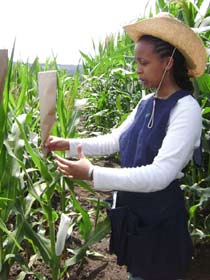 CIMMYT is adapting an advanced technology—the doubled haploid approach—to develop inbred lines of tropical maize for sub-Saharan Africa. It promises to reduce costs and speed the arrival of better-adapted maize for resource-poor farmers in the world’s toughest environments.
CIMMYT is adapting an advanced technology—the doubled haploid approach—to develop inbred lines of tropical maize for sub-Saharan Africa. It promises to reduce costs and speed the arrival of better-adapted maize for resource-poor farmers in the world’s toughest environments.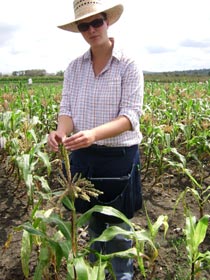
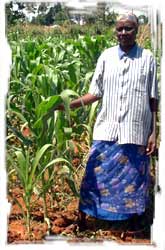 Kenyan farmers’ verdict is out: “Ua Kayongo is the best Striga control practice and we will adopt it.”
Kenyan farmers’ verdict is out: “Ua Kayongo is the best Striga control practice and we will adopt it.”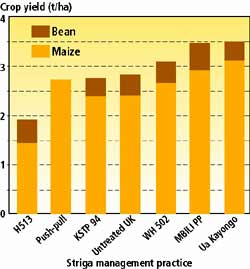 Farmers in the WeRATE evaluations were able to plant the new maize using their normal husbandry methods, including intercropping with legumes and root crops. “I’ve been pulling and burying Striga on my 5-acre farm for the past 17 years and the problem has only grown worse,” said Rose Katete, a farmer from Teso; “Ua Kayongo has provided the best crop of maize that I’ve ever grown!”
Farmers in the WeRATE evaluations were able to plant the new maize using their normal husbandry methods, including intercropping with legumes and root crops. “I’ve been pulling and burying Striga on my 5-acre farm for the past 17 years and the problem has only grown worse,” said Rose Katete, a farmer from Teso; “Ua Kayongo has provided the best crop of maize that I’ve ever grown!”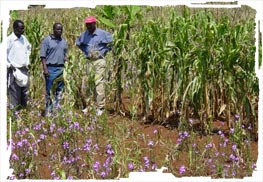 In a country where each person consumes at least 100 kilograms of maize a year, a new, easy-to-use, affordable practice that could raise the crop’s production by 200,000 tons is, naturally, greeted with much celebration in Kenya.
In a country where each person consumes at least 100 kilograms of maize a year, a new, easy-to-use, affordable practice that could raise the crop’s production by 200,000 tons is, naturally, greeted with much celebration in Kenya.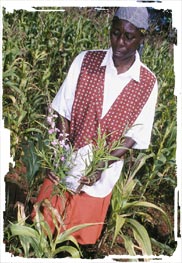
 Insect Resistant Maize for Africa (IRMA) and its sister project, Water Efficient Maize for Africa (WEMA), have embarked on an initiative to train personnel in mass rearing of insects and develop rearing facilities. These insects are used in evaluation of maize resistance to insect damage. Through the initiative, 12 technicians from Kenya, Uganda, Tanzania, and Mozambique participated in a Stem Borer Mass Rearing Training Course held at the Kenya Agricultural Research Institute (KARI)-Katumani, Machakos, Kenya during 25 March-05 April 2012.
Insect Resistant Maize for Africa (IRMA) and its sister project, Water Efficient Maize for Africa (WEMA), have embarked on an initiative to train personnel in mass rearing of insects and develop rearing facilities. These insects are used in evaluation of maize resistance to insect damage. Through the initiative, 12 technicians from Kenya, Uganda, Tanzania, and Mozambique participated in a Stem Borer Mass Rearing Training Course held at the Kenya Agricultural Research Institute (KARI)-Katumani, Machakos, Kenya during 25 March-05 April 2012.
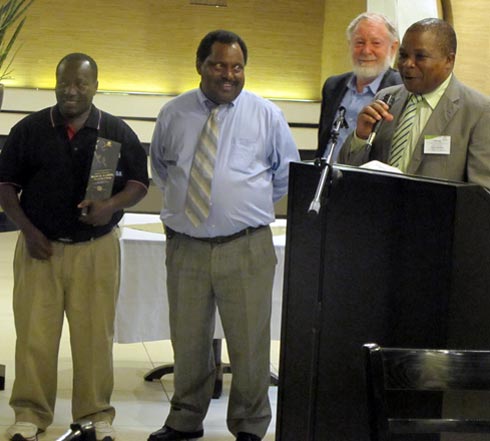 Speaking at the SIMLESA’s second “birthday party,” Joana Hewitt, chairperson of the ACIAR Commission for International Agricultural Research, reiterated the Australian government’s commitment to long-term partnerships with African governments. Participants also heard of the new SIMLESA Program in Zimbabwe, focusing on crop-livestock interactions. During the dinner, Kenya and Mozambique were recognized for their efforts in promoting and strengthening local innovation platforms.
Speaking at the SIMLESA’s second “birthday party,” Joana Hewitt, chairperson of the ACIAR Commission for International Agricultural Research, reiterated the Australian government’s commitment to long-term partnerships with African governments. Participants also heard of the new SIMLESA Program in Zimbabwe, focusing on crop-livestock interactions. During the dinner, Kenya and Mozambique were recognized for their efforts in promoting and strengthening local innovation platforms.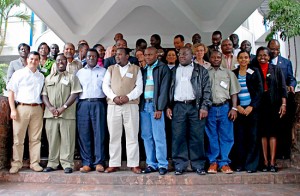 A workshop on media handling and science communication was held for spokespersons of the
A workshop on media handling and science communication was held for spokespersons of the